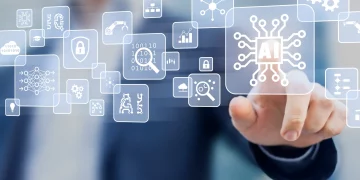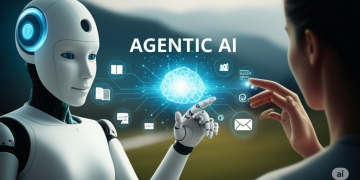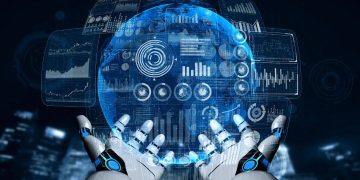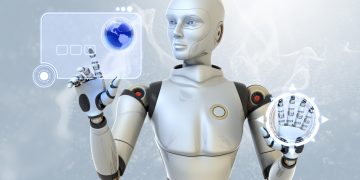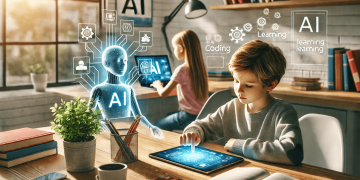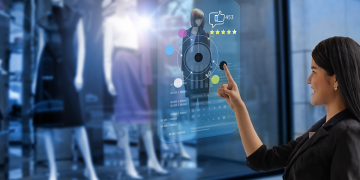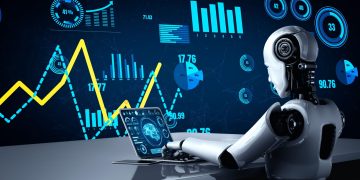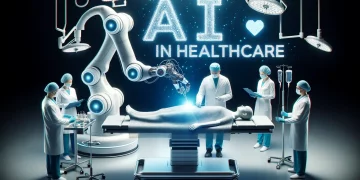Introduction
In recent years, the integration of Artificial Intelligence (AI) into public safety systems has emerged as a game-changing development for enhancing security, preventing crimes, and responding to emergencies. Public safety agencies across the globe are increasingly leveraging AI to address a wide range of security challenges, from crime prevention to disaster management. AI technologies are transforming the way law enforcement, emergency services, and security agencies operate, allowing them to respond faster, predict potential threats, and take preventive measures with greater precision.
This article explores the diverse applications of AI in the public safety domain, examining how it enhances security, supports law enforcement, assists emergency responders, and improves overall societal safety. We will also discuss the ethical considerations, challenges, and potential future developments of AI in public safety.
1. The Role of AI in Public Safety: A Broad Overview
1.1 Defining AI and Public Safety
Artificial Intelligence encompasses technologies that simulate human intelligence, enabling machines to perform tasks such as learning, problem-solving, and decision-making. In the context of public safety, AI refers to the use of machine learning, predictive analytics, facial recognition, data mining, natural language processing, and other AI technologies to improve crime detection, emergency response, surveillance, and disaster management.
Public safety encompasses a broad range of activities aimed at ensuring the protection of citizens, including law enforcement, firefighting, emergency medical services (EMS), traffic management, and disaster relief. AI is increasingly being used to optimize these functions, making them more efficient, timely, and accurate.
1.2 Why AI in Public Safety Matters
AI has the potential to drastically improve public safety by automating tasks, analyzing large datasets, detecting patterns, and predicting threats in real-time. With AI, safety organizations can process vast amounts of data quickly and make faster decisions, which is critical for maintaining public order and responding to emergencies effectively.
AI is also instrumental in reducing human error, enhancing decision-making, and enabling predictive capabilities that were previously unattainable. For instance, AI can forecast where crimes are likely to occur, helping law enforcement deploy resources more efficiently.
2. AI Applications in Crime Prevention and Law Enforcement
2.1 Predictive Policing and Crime Forecasting
Predictive policing refers to the use of AI and machine learning algorithms to analyze crime patterns and predict where crimes are likely to occur in the future. By analyzing historical data on crimes, geographic locations, weather conditions, and social factors, AI can identify trends and provide law enforcement agencies with actionable insights.
- Case Study: PredPol (Predictive Policing Technology) PredPol is an AI-driven system used by police departments in the United States to predict where crimes are most likely to happen. The system analyzes past crime data and identifies “hot spots,” allowing police to allocate resources more efficiently and prevent crimes before they occur.
2.2 Facial Recognition for Surveillance
Facial recognition technology powered by AI is increasingly used by law enforcement agencies for surveillance and identifying suspects. By comparing facial features captured by cameras with databases of known criminals, AI can quickly identify individuals in real-time, providing enhanced security in public spaces, airports, and crowded events.
- Case Study: The Use of Facial Recognition in Airports Many airports worldwide use AI-powered facial recognition to enhance security, expedite passenger flow, and prevent security breaches. For instance, the use of facial recognition at airports like Dubai International Airport has improved security screenings and helped reduce human error in identifying suspects or individuals on watchlists.
2.3 Crime Analytics and Data Mining
AI can process large amounts of data to uncover patterns and trends in criminal activities. By analyzing social media posts, phone records, surveillance footage, and other data sources, AI can assist in criminal investigations and identify criminal networks, often before crimes occur.
- Case Study: Data-Driven Crime Investigation In the UK, law enforcement agencies use AI to analyze vast amounts of criminal data, including historical cases and social media activity, to identify organized crime rings and predict future criminal behavior. AI models can analyze complex datasets to identify connections between individuals, locations, and events, aiding in more accurate investigations.
2.4 AI-Driven Communication Systems for Law Enforcement
AI can enhance communication systems within law enforcement agencies, improving coordination, resource allocation, and operational efficiency. AI chatbots, for example, can handle incoming reports or inquiries from the public, enabling human officers to focus on more critical tasks.
3. AI in Emergency Response and Disaster Management
3.1 AI for Real-Time Emergency Response
AI can assist emergency responders in identifying, responding to, and managing incidents more effectively. AI tools can analyze real-time data from sensors, cameras, drones, and social media to provide first responders with up-to-date information about the situation.
- Case Study: AI in Natural Disaster Management AI is being used in disaster-prone regions to predict and manage natural disasters. For example, AI systems can process satellite imagery to predict the path of hurricanes or floods and provide early warnings to communities. During a disaster, AI-powered drones can be deployed to assess damage and locate survivors.
3.2 AI-Powered Traffic Management and Accident Prevention
AI is increasingly used to optimize traffic management and prevent accidents. AI systems can analyze traffic patterns, predict accidents, and provide real-time updates to drivers about potential hazards.
- Case Study: AI in Smart Traffic Systems Cities such as Los Angeles have implemented AI-powered smart traffic management systems that can predict traffic congestion, detect accidents, and suggest alternative routes in real-time. These systems help reduce the response time for emergency vehicles and prevent accidents by managing traffic flow efficiently.
3.3 AI in Public Health and Disease Outbreaks
AI is also playing a key role in public health and emergency medical services (EMS). In the event of a disease outbreak or health crisis, AI can analyze medical records, social media posts, and other data to detect early signs of an outbreak and provide timely responses.
- Case Study: AI in COVID-19 Tracking and Response During the COVID-19 pandemic, AI was used to track the spread of the virus, predict hotspots, and provide real-time data to health organizations. AI-driven models analyzed vast amounts of health data to predict infection rates and recommend interventions.

4. AI in Public Surveillance and Security
4.1 Smart Surveillance Systems
AI-powered surveillance systems use cameras, sensors, and other devices to monitor public spaces in real-time. AI can analyze this data to detect unusual behavior, recognize faces, and identify potential threats before they escalate.
- Case Study: AI Surveillance in China In China, AI-powered surveillance systems are extensively used for social monitoring. These systems analyze video feeds from millions of cameras across the country, identifying suspects and preventing crimes. The government uses facial recognition and behavior analysis to ensure public safety.
4.2 AI in Border Security
AI is revolutionizing border security by using facial recognition, biometric data, and predictive analytics to enhance screening processes and prevent illegal crossings. AI tools help monitor border crossings, identify potential security threats, and reduce human error.
- Case Study: AI in U.S.-Mexico Border Security The U.S. Border Patrol employs AI to monitor border security, using machine learning models to predict areas of high risk for illegal crossings and deploy resources accordingly.
5. Ethical Considerations and Challenges
5.1 Privacy and Data Security Concerns
As AI systems collect and analyze massive amounts of personal data, there are concerns about privacy and data security. The use of facial recognition and surveillance raises significant questions about individuals’ right to privacy, particularly in public spaces.
- Example: Privacy Concerns in AI Surveillance The widespread use of AI for surveillance, particularly facial recognition, has sparked debates about privacy rights. Many activists argue that these technologies disproportionately affect minority groups and violate personal freedoms.
5.2 Bias in AI Systems
AI systems can inherit biases from the data they are trained on. If AI models are trained on biased data, they may make decisions that unfairly target certain groups or overlook specific threats. For example, facial recognition technologies have been criticized for being less accurate in identifying people with darker skin tones.
- Case Study: Facial Recognition and Racial Bias In 2018, studies found that facial recognition systems, including those used by law enforcement, were less accurate in identifying women and people of color, raising concerns about racial bias in AI technologies.
5.3 Accountability and Transparency in AI Decision-Making
As AI systems become more involved in public safety, it is essential to ensure transparency and accountability in their decision-making processes. Authorities must establish clear guidelines for how AI models are used, how data is collected, and how decisions are made.
6. The Future of AI in Public Safety
6.1 Advancements in AI Technologies
As AI continues to evolve, future advancements will enable even more sophisticated applications in public safety. Innovations such as autonomous drones, advanced robots, and predictive policing models will further enhance the ability of law enforcement and emergency services to respond to and prevent incidents.
6.2 AI and Global Collaboration in Public Safety
AI’s role in global safety will continue to expand as international organizations and governments collaborate on sharing data, resources, and best practices. By leveraging AI to fight global challenges like terrorism, natural disasters, and pandemics, AI can foster a more secure world.
Conclusion
AI is already playing a pivotal role in public safety, from crime prevention and law enforcement to disaster response and emergency medical services. The use of AI enhances decision-making, provides real-time insights, and helps ensure a faster, more efficient response to threats. However, ethical concerns surrounding privacy, bias, and transparency remain challenges that need to be addressed. As AI technology continues to advance, its potential to revolutionize public safety is vast, offering more precise, efficient, and effective ways to safeguard our communities.





